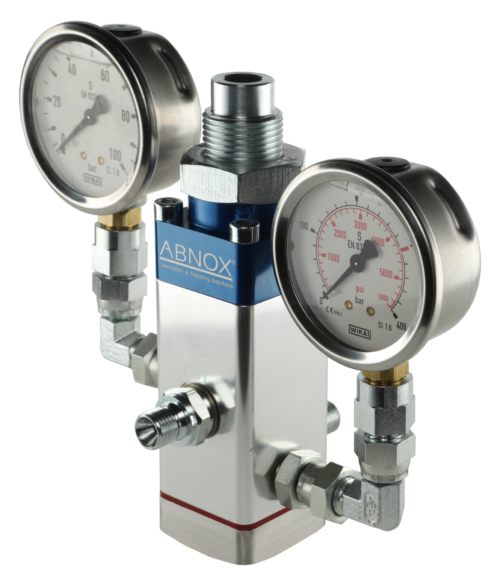ABNOX - Your partner for lubrication systems and industrial solutions
Your System Partner for integrated processes in Metering, Lubrication and Clamping Technology for over 75 years.
Productfinder
Enter the part number or the product name.
Products
Metering Valves

Dosing Devices AXDD

Lubricant Supply Technology

Single Pumps

Material Pressure Regulators MDR

Modular Units MDR / MMDR

Lubrication Equipment

Filling Devices for Grease Pumps

Grease Pumps

Hand Push Pumps

Oil-Level Windows

Clamping Technology

Fittings

Hydraulic Hoses

Filters

Material Manifolds

Compressed-air Manifolds

Pump Connector

Static Mixers

Volume Meters

Services
What we offer:
ABNOX has experience of many years in Lubrication, Metering and and Clamping Technology. A development team of qualified and dedicated engineers and designers puts their know-how at your disposal. For your needs we develop the optimal solution for you.
-
Customised Developments
-
Warranty Services
-
Checklists
-
ISO 9001
-
Conditions
Customised Developments
Together towards your solution
A modern equipped mechanical workshop enables the production and testing of prototypes and samples in the shortest possible time. A clearly defined development process guarantees efficient and high-quality work.
Total solutions tailored to your needs in Lubrication, Metering and Clamping Technology are part of our core business.
Warranty Services
Things don't always go like clockwork
For warranty claims, the regulations of the Swiss Association of Machinery Manufacturers (VSM) are authoritative.
We grant a three-year warranty on on the following grease guns MURALT, ABNOX WANNER® and mINI WANNER®. All other ABNOX products have an one-year warranty (data for single-shift operation).
ABNOX guarantees you further:
- Competent advice on conveying, pumping, dosing and application of lubricants.
- High quality products at competitive prices.
- An optimal support also after the purchase.
Checklists
Design of Dosing Systems
Are you looking for a new lubrication system? Fill out the checklist and we will be happy to make you a non-binding offer.
read moreISO 9001
The quality of our products is the foundation of our success.
We are certified according to ISO 9001:2015. More importantly, all our employees have internalized that only the pursuit of the highest quality at all levels satisfies our customers.
read moreConditions
General Terms and Conditions of Purchase and Delivery
Our general terms and conditions of delivery for machines and spare parts (GTCT 2019) and our general terms and conditions of purchase can be found here:
read moreThe Company

A successful Family Business
ABNOX is a healthy family business. We have been successful worldwide since 1946 and stand for quality and cutting-edge Technology in Lubrication, Metering and Clamping Technology.
Jobs
Business Segments
About ABNOX
Our sales partners worldwide
D-2 Block MIDC Pimpri Chinchwad Industrial Area
IN-411 019, Pune, Maharashtra" data-phone="+91 (0) 72 4931 2572" data-mail="mailto:info@hennlich.in" data-web="http://www.hennlich.in">